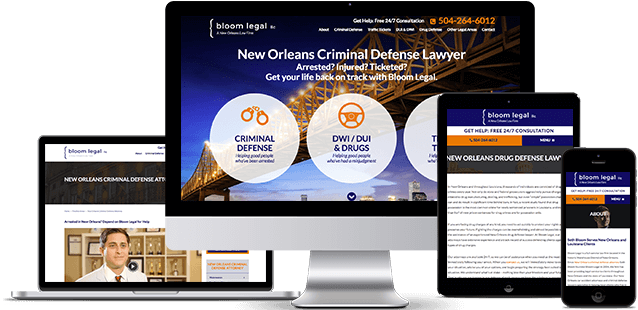Pay-per-click (PPC) marketing is a tool for generating leads by paying for ads that new visitors will click on to reach your law firm’s website. In other words, PPC campaigns allow you to buy visits from potential clients rather than getting them to your website organically.
To learn more about how to use PPC marketing to bring in more leads and, eventually, conversions, we’ve compiled this guide for your firm. Read on to learn about PPC basics, strategies, and considerations for how to get the best return on investment with your campaigns.
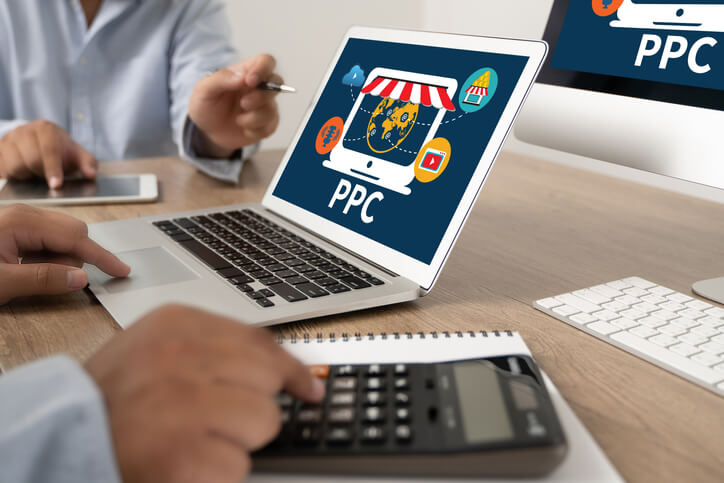
How to Start a Pay-Per-Click (PPC) Campaign for Your Law Firm
Getting started with a new Google Ads campaign is crucial to generating leads, but it can also be overwhelming to know where to begin.
First, think about the most important components of your website. Your business name, practice areas, location, something unique about your firm and why someone should visit your site or contact you should be your starting point. Defining these essential aspects will help you structure your campaign and know what to communicate in your ad.
We go through these key components in more detail below.
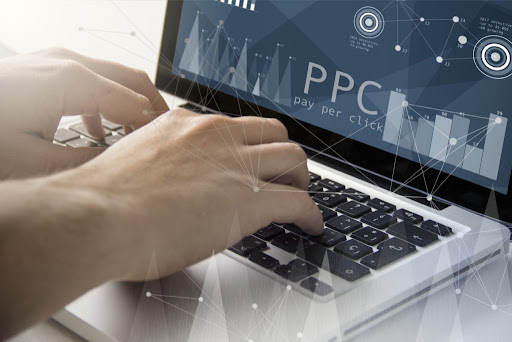
Brand
Set up a small campaign strictly for your brand name. For users who already know your practice name, your ad will immediately show up for a low CPC since a) it’s unlikely your keywords are highly competitive and b) the quality score will be high since the terms are relevant to your site content.
Practice Areas
If your firm has several practice areas, concentrate on the areas with the highest case value to maximize your return on investment. Typically, the highest case values have competitive bids on Google AdWords, so bear that in mind when deciding a monthly ad spend.
Selling Points About Your Firm
Is your firm available 24/7? Do you provide free consultations? Do you have expertise in one niche area? Know your business’s selling points and then talk about them in every single ad. Let your consumers know why they should click on your ad rather than your competition’s.
Targeted Locations
Rather than spreading your ad thin amongst many areas where you don’t typically bring clients in front, focus in on a small radius around your firm. You’re most likely to bring in leads and new clients within a 5- to 10-mile radius than anywhere else.
These settings will make a huge impact on the overall success of your campaign(s). The overall structure of the campaign(s) can make or break your account’s success, so make sure you have the proper settings in place.
How to Maximize the ROI of Your Law Firm PPC Campaign
We manage more than 40 pay-per-click campaigns for law firms. There are contributing factors to every campaign that add to the success of PPC efforts. We detail these factors below.
You Need a Clear Strategy and Goal
Campaigns that have a clear goal in a niche objective succeed. We can effectively target terms, create landing pages, and tailor the campaign to meet a set goal for leads.
Available on both Google and Bing, the keyword planner is an essential tool to use when planning out a PPC campaign. It assists you in coming up with keyword ideas, as well as forecasting the results your keywords and campaign settings can achieve. This is essential when planning for budgeting, bidding, and targeting.
Be Precise When Targeting
A successful attorney PPC campaign will be precisely targeted towards the right audience, at the right time, and in the right place. By using location targeting, keyword match types, ad scheduling and device targeting, you can ensure your ads show to users making searches related to the desired action for your business, in a location relevant to your business, at a time your business can serve them, and all delivered on the medium best suited for driving home that desired action to your business. A highly focused and targeted campaign can help to ensure your budget isn’t wasted on irrelevant traffic
Advertise in a Non-Competitive Area
Campaigns that are typically in non-competitive areas have a higher chance for success. Competitive areas can have success; however, it will cost A LOT more money. For example, it will be substantially more difficult for a personal injury law firm to achieve results than, say, a patent law firm. The reason is that there are more law firms seeking to market in the plaintiff’s area, and that drives up bid costs.
Leverage Digital Tools
PPC advertisers have a number of automated and AI tools at their disposal to help run their campaigns. Rules, scripts, and APIs can help you automate certain tasks (i.e. raising a bid to reach a certain position), control budgets, send out email alerts, organize accounts, and even give you fully customizable reporting at scale.
Budget Fairly
You need an appropriate budget to both bid on phrases and to manage the account. If you only budget for the ads and no management, then your account will wither and be ineffective.
Once you know from the planning stage how much you can spend, the next step is to determine how much you should spend. Factors such as marketing budget, goals, and marketplace competition are what should determine your initial budget.
It takes a lot of work to get a campaign running and performing on a monthly basis, especially when you’re on a limited budget. To do this effectively, you may need to seek out a law firm PPC expert.
Use Dedicated Landing Pages
You need to get your quality score up so that you can bid less and rank higher. More importantly, your landing pages need to match to the keyword phrase you are bidding for. Using dedicated landing pages relevant to your campaign will help you increase your score.
Tips for Better PPC Banner Ads
Here at PaperStreet, we create a variety of successful banner ads. We have found that the following guidelines for creating banner ads typically generate higher clicks and an overall better brand for your law firm.
1. Be Bold
The goal is to draw attention to the ad on a cluttered website page. Use a bold color to draw attention to the ad so that users will see your message.
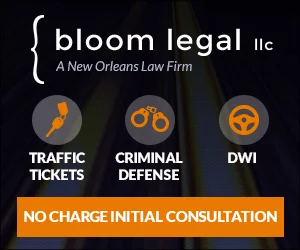
2. One Short Statement
You need a value proposition. Typically, this is expressing what your firm is about and why someone should click on your copy. Your copy needs to be seven (7) words or less. When creating the banner ad, think about short headlines that you would find on a billboard.

3. Call to Action
You need to include a call to action, a reason to click and go to your website. K.I.S.S. Keep it short and simple. Examples: Learn More, Free Consult, Download Now, or Sign Up. Make the call to action stand out on the page.

4. Declutter the Ad’s Presentation
Do not clutter the ad. Keep it simple with a good headline, call to action, and small logo. Use either good color and/or a photo. Keep in mind that the entire ad does not have to be filled – use white space to balance the design.

Where to Invest Your Law Firm’s Paid Ad Budget
A lot has changed this year in terms of where you can, and often should, invest your paid marketing budget. And although Google is still where you should start your journey, some advertising platforms have made drastic changes in order to compete with the billion-dollar elephant in the room.
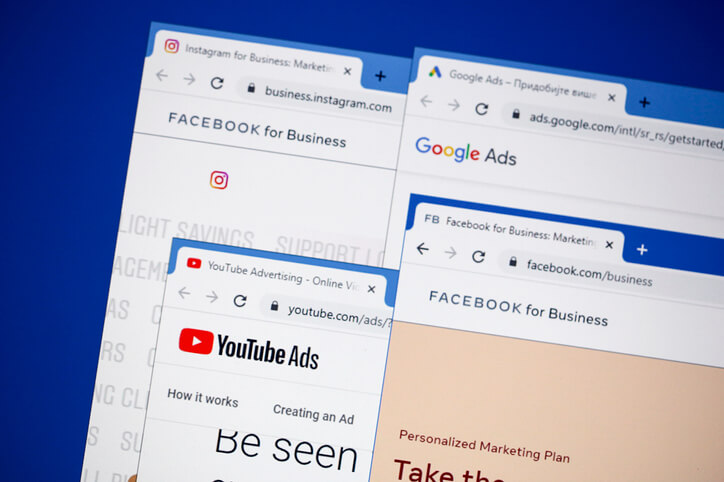
Google is king. It has been the prime search engine for some time, and it is still where you should test your marketing budget before venturing down the rabbit hole of paid advertising options. With Google, you have a massive audience to tap into, and you can tailor your targeting niche down to the people who are likely to convert. Several tools are available to help deliver different ad formats, run A/B tests, research new keywords, and remarket ads.
Pros:
- As the largest network, Google captures traffic from its search engine, connected properties like Youtube, and third-party websites that make use of Google’s search technology or their Adsense program (the image ads that you see on other websites).
- Google provides remarketing options for past site visitors, letting you continue to show ads to anyone who visits your website.
- Google has deep targeting settings, letting you finely target people within your audience.
- Text, image, and video ads let you try different mediums to get your message across to viewers.
- Google is the default search engine for Android phones, providing a nice boost to mobile traffic.
Cons:
- For hyper-competitive markets, the cost per click (CPC) can be so high that your return on investment is even. We have seen personal injury stretch into several hundreds of dollars for CPC, even for more niched topic areas like workers’ compensation.
- Remarketing can’t be done for individuals within certain topic areas such as medical injuries.
- Google heavily pushes its advertisers to use their automated bidding systems, which (although improving over time) still lack the competitive edge needed for the legal industry.
- Customer support leaves a lot to be desired. You are often sent to overseas call centers where the phone rep only provides boilerplate responses. Getting the right technical assistance can mean calling several times until you speak to someone willing to go above and beyond their duties, and often language barriers can make understanding account issues difficult.
Bing/Microsoft
Even though Bing only captures a small fraction of the total internet search traffic that exists, they are still the second largest search engine around. The majority of advertisers ignore Bing, and this allows for really low bids for a decent share of traffic.
Pros:
- Bing is the second most-used search engine in the United States.
- Bing is the default search engine for most PC computers, so desktop ads tend to do well here.
- Bing can see CPC prices that are 1/10th the cost of clicks on Google, so smaller firms or those with lesser funds to invest in paid advertising tend to do well on Bing.
- Bing does not require a large investment to see solid traffic, making it an ideal place to spend your marketing budget if bids on Google stretch into the $100+ area.
- Bing offers ad settings and targeting similar to Google.
- You can import campaigns directly from Google Ads. This lets you create campaigns on Google first to leverage their larger share of user data, then import optimized targeting settings into Bing.
Cons:
- It does not do well for some industries, and mobile traffic tends to be very weak on Bing’s network.
- Limited conversion tracking for phone calls. It is recommended that you use a call tracking solution like CallRail or CallTrackingMetrics.
Now, we are tapping into social platform marketing. The success that you’ll see on Facebook is dependent on the kind of audience that you want to target. Facebook does well for the 25+ age demographic, but not as well for younger audiences. Instagram, which is owned by Facebook, tends to have more success for the 18-25 group. Through Facebook’s advertising dashboard, you can create ads that target both groups.
Pros:
- Facebook allows for highly detailed targeting, so you are able to focus ads to a very niche subgroup of people.
- Facebook has very high exposure to ad images and copy. Facebook will get you a massive amount of impressions and, often, a large volume of clicks as well.
- Outside of the Facebook feed and the sidebar, the Facebook Network also stretches into Facebook Messenger, Instagram, and Facebook Stories.
Cons:
- Facebook does not permit more than 20% of the surface areas of ad images to contain text.
- Conversion rates tend to be very low depending on the kind of ads being run.
- Conversion tracking can be tricky. Facebook offers numerous ways to track goals on the website, but it should be paired with a phone tracking system for the best results.
In the past, Reddit worked on a cost-per-impression system where you would pay based on how often your ads were seen. Because most people are self-trained to ignore ads, this approach made it a weaker marketing avenue for law firms. However, Reddit updated its marketing platform to include a CPC model that is very effective in driving high volumes of traffic to your website. Instead of paying by impression, you only pay for users who actually interact with your ad.
Pros:
- Reddit offers massive exposure for a very low cost.
- There is less competition from other advertisers, as Reddit only recently switched its ad network to using a Pay-Per-Click model.
Cons:
- Reddit ad success is highly dependent upon targeting popular subreddits (groups).
- Ads are limited in screen size and perform better if they are presented in a more casual and direct way to a niche audience.
As LinkedIn is made for professionals, it excels at targeting ads to people based on education, experience, and employment. It has very detailed targeting for these areas, letting you really niche out your ads to a similar level of detail as Facebook. You will see much lower traffic than Facebook but, depending on the kind of ads that you are running, you may find more success here.
Pros:
- LinkedIn is excellent for targeting people based on their professional lives. It is often considered the Facebook for business professionals.
- It offers highly detailed targeting methods, similar to Facebook.
Cons:
- Most of the detailed targeting is focused on business/employment details. If you are trying to target an audience outside of this, you are better off running ads through Facebook.
People often forget Twitter as a marketing platform, but it has a solid audience, highly detailed targeting, and its own targeting options that other marketing platforms simply don’t offer. The downside is that it’s still a very small player when it comes to ad traffic, and the data behind its platform puts it behind Facebook and Google in terms of results. Still, depending on your campaign needs, it could be worth investing some budget into their network.
Pros:
- Twitter offers campaigns that focus on social outreach. If there is a new class-action suit, for example, you can use Twitter to get the word out and help spread the news.
- Since Twitter only works well in specific situations, the CPC is very low.
- Ads that tell a story tend to perform well on Twitter. It may be worth boosting blog content on Twitter to build an audience.
Cons:
- Twitter performs well below Facebook and Google, making it only worth using as an addition to existing campaigns on those networks.
- If your ads do not spark a conversation, or you do not have time to assist in promoting these conversations, the effectiveness of these campaigns can stall.
Geofencing
Geofencing isn’t a new marketing tactic, but it is still unknown to most advertisers. With Google and Bing, you are relying on people using those search engines to see your ads. With Facebook, Reddit, and Linkedin, people need to be using those social networks to see your ads. With geofencing, a person needs only to enter within a physical area in order to begin seeing ads on different websites around the internet.
Pros:
- With geofencing, you are able to target people who enter within physical coordinates, making it one of the few digital marketing avenues that isn’t dependent upon a person’s search interests but instead physical location (almost like a billboard ad, but with an online presence).
- Geofencing has a fairly low cost, and some companies can attain high click-through rates depending on the websites and applications that they display ads on.
Cons:
- Geofencing can drive a lot of low-quality, ineffective traffic. Since it’s targeting people based on entry into physical zones within the real world, you will be showing ads to a lot of people who may not be part of your desired audience.
- Once people are added to the remarketing list, it can be difficult to remove them or filter your list down.
Direct Website Ads
Some websites run their own ad network on their website, rather than using third-party networks like Google Adsense. They can provide you with the details on their traffic, click-through rates, and sometimes on the results that advertisers can expect on their website. If you have a site that your audience frequents, it may be worth contacting them directly in order to run ads on their website.
Pros:
- Usually, you have direct control of how and where your ads appear.
- Sometimes the cost per click can be lower, as there isn’t a third party taking a cut of the revenue from the ads.
- These sites have their own analytics data to show how people interact with the ads.
Cons:
- It takes time to work with an individual website to set up these kinds of ad programs.
- You are often only advertising on that single website, so there isn’t a way to increase your traffic from the ads by featuring it on multiple other sites within a network.
Other Ad Networks
There are dozens of other marketing platforms out there for everything under the sun. If a website becomes popular, it will often try to find ways to monetize that traffic. Over the last two decades, a multitude of ad networks have popped up, each offering its own pros and cons. We recommend sticking to the ones above, but if there is a particular website that your audience frequents, and it is part of a network not mentioned here, it may be worth pursuing.
Google Ads: The Power of Bid Adjustments
Contrary to what some people may believe, Google Ads isn’t a marketing avenue that you can throw an unlimited budget at and be successful. It takes a carefully crafted campaign involving eye-catching ad copy, quality landing pages, selective keyword targeting, high converting extensions, and intricate bid optimizations that focus your campaign on the people who are most likely to convert.
We commonly see new clients come to us with accounts that have exorbitantly high AdWords budgets, but they are designed to throw money at anyone willing to click on their ads. There is no focus on quality clicks, and without proper optimization, these campaigns often struggle to reach higher positions in Google search results. Usually, their CTR, or click-through-rate (how often someone clicks on their ads when they are shown in search results), is at or below the law industry average of 1.3% and their unique conversion rate commonly falls below the average of 4.3%.
Enter Micro Bid Optimization
At PaperStreet, one of the ways we increase the volume and quality of conversions in your account is through the use of micro bid optimizations. With these, we analyze the last three months of data in your account to find the geographical locations, days of the week, and devices that have historically resulted in a conversion. We can see that Wednesdays and Thursdays may be the best days for your firm, that the zip code on the edge of town brings in more calls, and that you’ve had better results from people using mobile devices.
With this information in hand, we go through each of the individual areas where your account performs well and add small adjustments to your bids. For a person who falls into any or all of these particular areas, the cost for that click will be slightly higher. However, that person statistically has a much higher likelihood of contacting your firm compared to the standard searcher. We can also look at data on an even more granular level to target specific age groups, genders and sometimes different income brackets if your legal practice area would benefit from them.
Negative Adjustments
By analyzing the data in your account, we can likewise do negative bid adjustments if there are specific areas that tend to use a lot of your monthly budget but produce very few results. For a campaign targeting life insurance fraud, for example, we may want to remove any age brackets below 45 years old or put a negative bid adjustment in place so that less of our budget is spent on this audience. This helps you use your marketing dollars wisely on the people who you want contacting your office, while reducing the number of people who may be shopping around, researching or have cold feet.
You should be optimizing your clicks based on the actual user data available in your account.
By fine-tuning your campaigns, you can expand your conversions, increase their quality, and spend less on wasted leads. These micro bid adjustments are just one of the many areas that PaperStreet looks at when optimizing your account to bring you more success online.
What PPC Metrics Should You Monitor?
It seems like marketers speak one language – marketing jargon – and law firms are just trying to decipher what’s working, what isn’t, and how efficiently their budget is being spent. Often, the metrics get diluted and it’s difficult to tell what’s important. To help simplify things, here are the 5 metrics you should care most about when you review your data.
- Cost per conversion: This metric lays out how much you spent to get one lead from your paid search ads. Pay attention to this one! How much is a lead worth to you? For paid search, your leads should be in the $100-$500 ballpark, depending on practice area.
- Conversion rate: This metric correlates to how effective your ads are to your landing page. Basically, it tells the story of how relevant your ads are to what people want. It shows how often, on average, your ad leads to a conversion. This is important because if you’re paying for clicks, you want to increase your odds as much as possible that the cost of a click will lead to a conversion. This metric is always a percentage and is most often seen in the 4-5% range for law firms.
- View-through conversion: This is an underrated metric that should carry more weight than it does. This occurs when your ad is seen but isn’t clicked on, however, within a 30-day window, that same person comes to your site and converts. It shows your ad resonated with them, was effective, and brought in a lead. However, this kind of lead wouldn’t show up under the conversions metric, so it’s an additional piece of data to look out for.
- Bounce rate: So your clicks are high, but your bounce rate is high too? Not a good sign. The goal is for clicks to be high and bounce rate to be low. If someone is only viewing one page of your site and immediately leaving, it shows your content wasn’t relevant enough to their search and essentially, you spent money on a click with no return. This is where the content on your site and the content in your ads need to be cohesive.
- Return on Ad Spend (ROAS): This one is a little trickier for law firms and takes some metrics from Google combined with a little manual work. Google Ads can tell you your advertising cost, but law firms will have to figure out what their revenue was. The formula is simply revenue / advertising cost. It’s not difficult, but involves an extra step. Let’s say last month you spent $5000 on Google Ads (PPC), which brought in three conversions/leads. From those three conversions, you signed 2 cases with a case value of $3500 each. You have more than a 100% ROAS. Awesome! It was worth the investment and, likely, you’d want to continue at that budget pace or slightly above.
Measuring and Understanding ROI from Your Paid Law Firm Marketing
What is a signed case worth to your firm? How much would you be willing to pay to generate a signed case? These are the most important questions when assessing the return on investment from your paid law firm marketing.
What is ROI?
Return on investment, or ROI, is the value of a signed client case subtracted by the cost to obtain said case and then again divided by the cost incurred to acquire the case.
For example, a campaign that drives cases with a total value of $1000 on $500 of total spend would have an ROI of 100%. For paid marketing, this can also be called ROAS, or return on ad spend, but the general concept behind both remains the same. A high ROI means the paid marketing is working, while a low or negative ROI means that changes need to be made to increase incoming leads’ volume or quality.
How is ROI from PPC Ads Measured?
The two keys to measuring ROI are conversion tracking from the paid campaigns and accurate and timely intake information from the firm to measure ROI properly. A firm can track leads back to the paid platforms as their source through website tracking codes, call tracking, and parameters set on the landing page URLs for the paid campaigns. While essential and valuable to know, this only tells half the story. When combined with the intake feedback and valuation of the leads driven in, we can see the whole picture and determine if the paid marketing is working.
For example, a firm could be getting 100 leads from one paid marketing campaign with a $1,000 budget and only ten from another with the same budget. Without feedback from the firm on intake or value, the campaign with 100 leads seems to be the better performer by a large margin. However, if the firm reports back that the 100 leads resulted in one signed case worth $1,000 and the ten leads from the other campaign returned 2 cases worth $10,000 each, then that changes the narrative dramatically. In that scenario, the 100-lead campaign would have an ROI of 0%, and the 10-lead campaign would have an ROI of 1900%.
Here are some factors that can affect the ROI of a paid campaign:
- Some firms are more discerning than others on the cases they will accept. Lower signing rates will negatively impact ROI, so it is important for the firm and marketing agency to communicate and exchange feedback to focus on balancing volume and quality.
- Likewise, some case types will have lower signing rates and need a higher volume to get a positive ROI. Again here, communication is paramount.
- The type of lead is also a key factor in ROI. For example, a phone call may be more valuable for some firms than a form submission or live chat (or vice versa). If that knowledge is made available to the marketing firm, they can optimize the campaigns to focus on driving more of the higher value conversion types.
Why is ROI important?
Every type of law practice is going to have different returns on signed cases. In general, a marketing agency will default to driving volume over quality if not given any direction on value or return. For that reason, both the firm and its marketing agency need to identify and target case types that will have the greatest return for the firm.
Once case value is understood, and ROI is calculable, this can benefit the paid marketing campaigns. For one, unprofitable campaigns can be adjusted, optimized, or outright stopped to move ROI in a positive direction. Another benefit of knowing ROI is to avoid the risk of potentially shutting down a profitable campaign due to the surface appearance of costs without the corroborating data on return. Additionally, a high ROI would indicate that your firm may want to continue investing more in the paid marketing for as long as the returns remain positive.
Hiring an Agency to Take Over Your Law Firms PPC Campaign: What to Expect from Performance
We recognize that setting up, maintaining, and analyzing a successful PPC campaign requires a lot of time, energy, and expertise. Luckily, in this section, we go through what you can expect when you decide to work with us.
Ramp-Up Time
Whether starting from scratch on a new PPC endeavor or transitioning an existing account to a new agency, you should expect to see a ramp-up period for performance of up to 90 days. No two agencies are going to manage your PPC in the exact same way. Even with an account that has been running for years, there will be an adjustment period as the agency optimizes your account. For a mature account, the marketing specialists will use existing data to make informed decisions based on past results to optimize and achieve future success. For a new account, this time will be utilized to test ads, keywords, and other settings in order to get the best possible performance
Mature vs. New Accounts
There are advantages and disadvantages to starting with a fresh account versus taking over an older one. Mature accounts have historical data that can be used to optimize right away, and Google also puts a good amount of stock in historical data and performance. Generally, a longer-running account has already established somewhat of a rapport and trust with Google, and the end result can be higher quality scores and lower costs. That said, this rapport does not take long to achieve, so a mature account will not always be ideal.
While it will take longer to set up and the ramp-up time is slightly steeper, a new account is not necessarily at a stark disadvantage when compared to a mature one. For example, a new account would be preferable to a mature account that has a poor or mediocre structure. In that case, a freshly built account would likely perform better than the mature account and would also be less work than fixing everything that’s wrong with the existing account. In an apples-to-apples comparison between a mature and new account of equal quality, however, one can expect the mature account to perform better initially. It should also be noted that new accounts on Google Ads are typically given a promotional credit of up to $500.
Why Choose PaperStreet?
At PaperStreet, we are fully equipped to take over any size pay-per-click account or build a new one from scratch. If you aren’t sure which is right for you, contact us today and let our experienced PPC specialists review your account and provide recommendations on how to proceed.
Our 7 Guarantees
Keeping 2,000+ clients happy since 2001.
- 1
You Will Love Your Design
We design to please you and your clients
- 2
Same-Day Support
24-hour turnaround edits during business hours
- 3
Free Education
We provide knowledge to help you expand
- 4
No Hidden Charges
We quote flat-rate projects
- 5
Own Your Site
No strings attached
- 6
Create Results
SEO, PPC, Content + Design = Clients
- 7
We Make Life Easier
One agency for Web, Branding and Marketing
- Contact Us
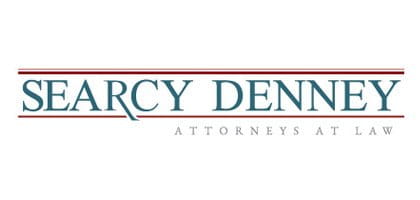
"PaperStreet Web Design’s efforts have increased conversions and the number of visitors to the platform substantially. The team has worked fastidiously to deliver satisfying products quickly. They have been accessible and encouraged innovative platform improvements, supporting continued partnership."

